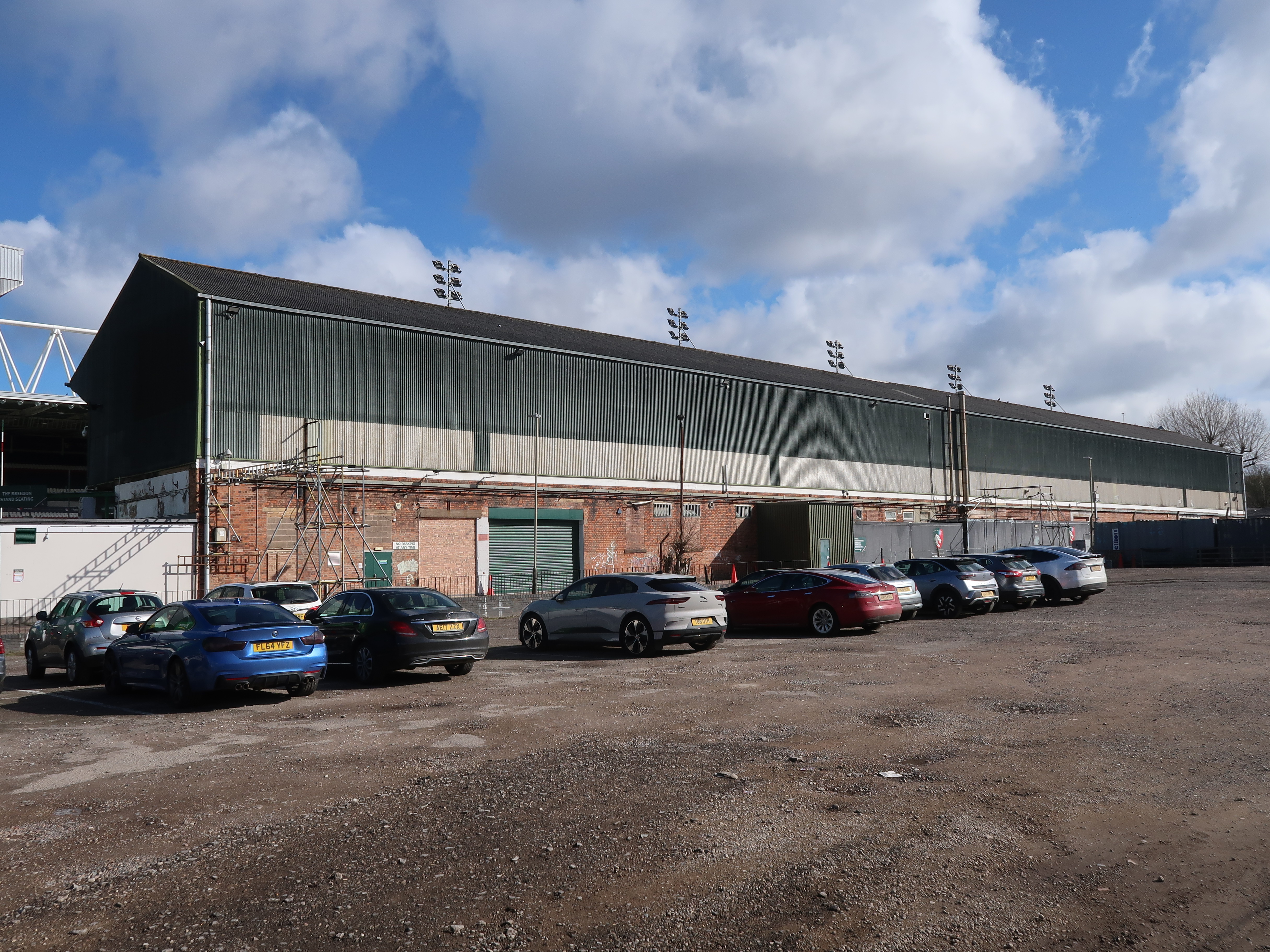
I was quite excited going to Leicester Tigers’ ground Welford Road for the Tigers’ match against Gloucester. Not just at the prospect of going to my first ever rugby match, but also at the chance to watch it from an oh-so-rare hundred-year-old Archibald Leitch stand, The Breedon Stand. At least, I thought so.
In my project on football grounds, I have discovered that Archibald Leitch, besides an awful lot of football grounds, erected stands at three rugby grounds pre-WW1 before designing a grand stand for Twickenham in 1925: In 1911 at Warrington, in 1912 at Cardiff Arms Park, and in 1914 at Leicester’s Welford Road.
When I some ten years ago was in Leicester, I noticed that one of the stands at the rugby ground looked like an Archibald Leitch stand. So when I found a local Leicester newspaper from 15th May 1914 informing that the club committee had decided to built an entirely new stand with a 4.000 capacity to the designs of Mr. A. Leitch; that work would be commenced immediately and finished before the start of the season; and that it would make the rugby ground second to none (rugby grounds that is), I felt pretty sure that this stand must be the Archibald Leitch one. And as the same newspaper on 31st August 1914 could report that the stand had been erected – despite the outbreak of WW1 – I was convinced the Breedon Stand had to be Archie’s stand.
As the history of rugby clubs is not really part of my project, I didn’t bother to dig deeper into it – for my project it would be enough to mention that he made the stand with the added bonus of being able to illustrate it with some photos. And personally, it would be a treat to visit another Archibald Leitch stand. But – as a historian, I ought to have remembered always to search for all evidence before jumping to conclusions.
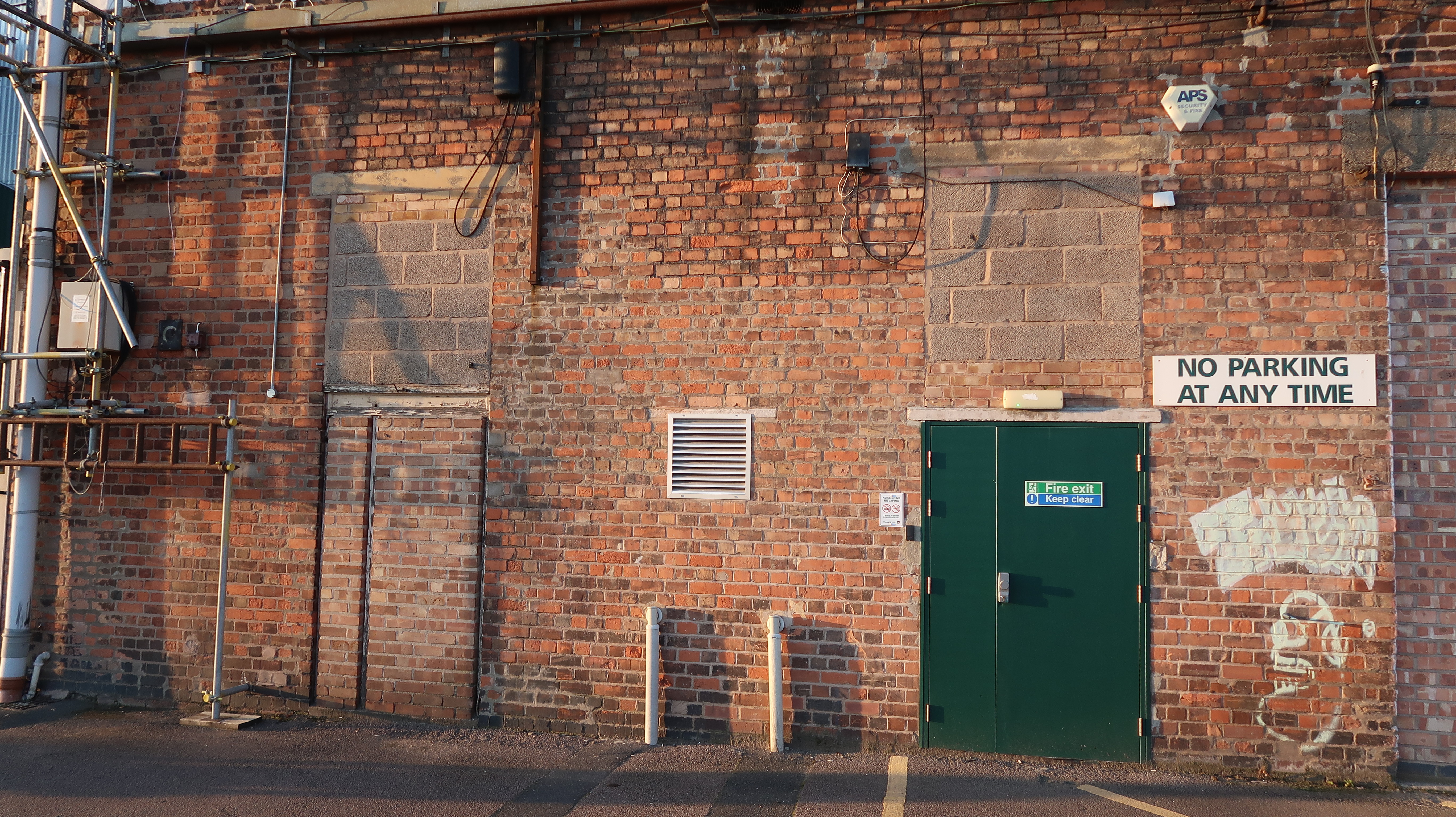
On my visit to Leicester last week, I immediately fell in love with the Breedon Stand! Beautiful, old school. The brickwork of the walls had traces of former windows and doorways, like scars picked up during more than 100 years of use. The currogated iron sheets on the top part of the stand looked very tired. In fact, during the night, when light was on inside, the little holes and cracks in it were glowing, when you looked at it from the outside.
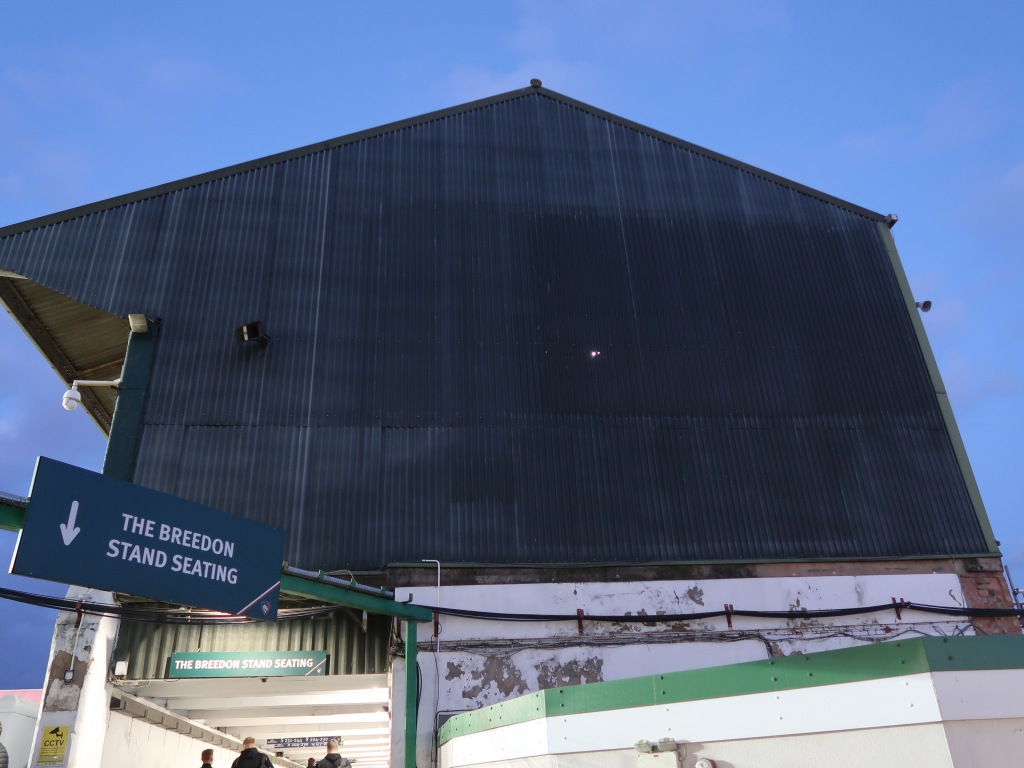
Before the match, I manage to talk my way inside the ground to take some photos – most stewards are really nice and interested in my ground project. The interior of the ground has even more thrills. Proper Ellison turnstiles. A concrete terrace with one row of crush barriers in front of it, and green wooden benches rather than plastic chairs for seats in the stand. I ask the steward if there are plans to replace it. Yes, but the fans don’t approve of them. The Breedon Stand and especially the terrace is the most popular part of the ground.
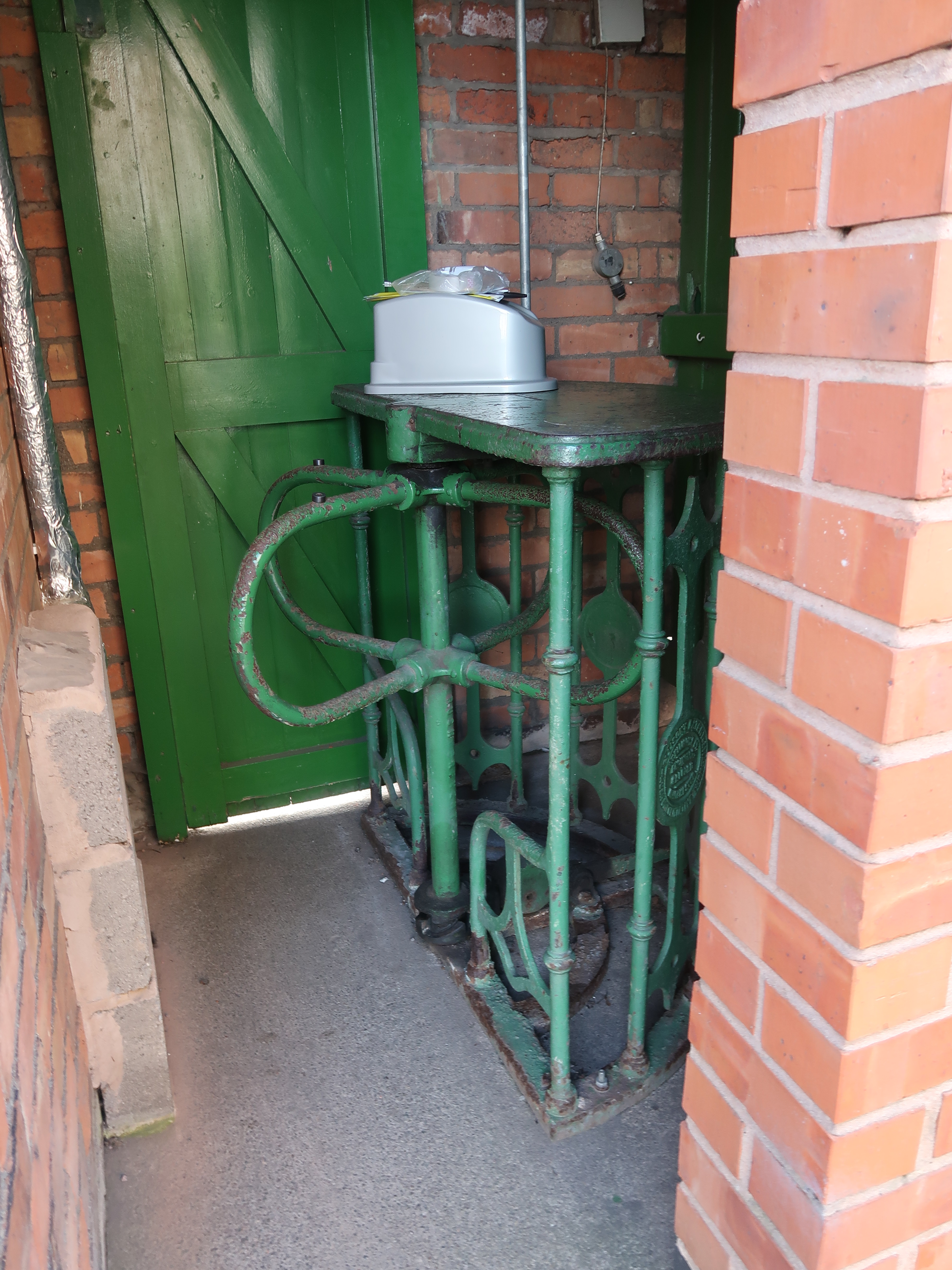
When I come back to the ground in the evening for the match and have plenty of time to look around, my attention turns to details that look odd for an Archibald Leitch stand. The columns supporting the roof usually have a small touch of elegance, being latticed and/or curved. Here, they are really raw and basic. And they are made to look even more basic, as they are quite rusty, not painted in the club colours as they normally are.
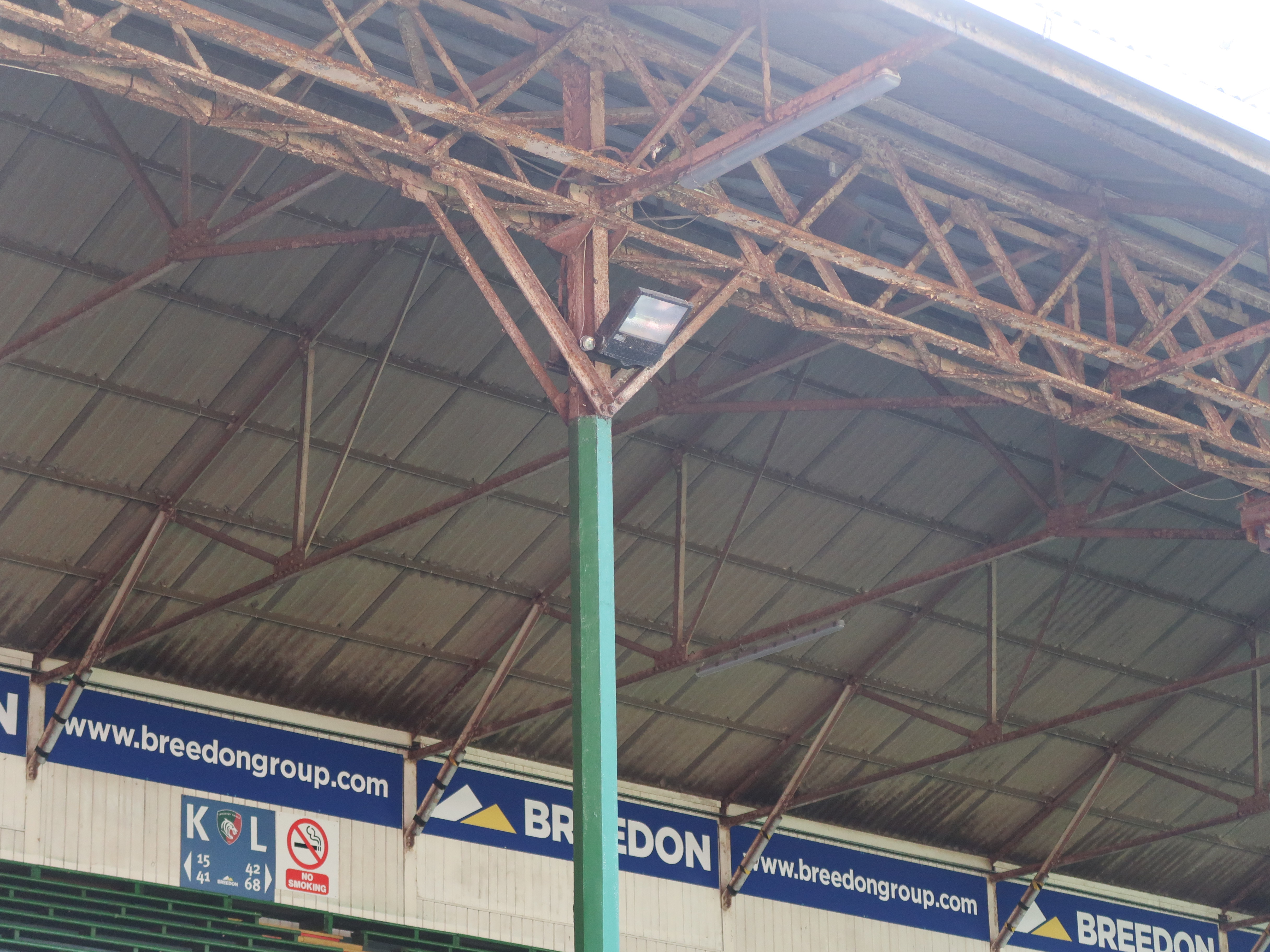
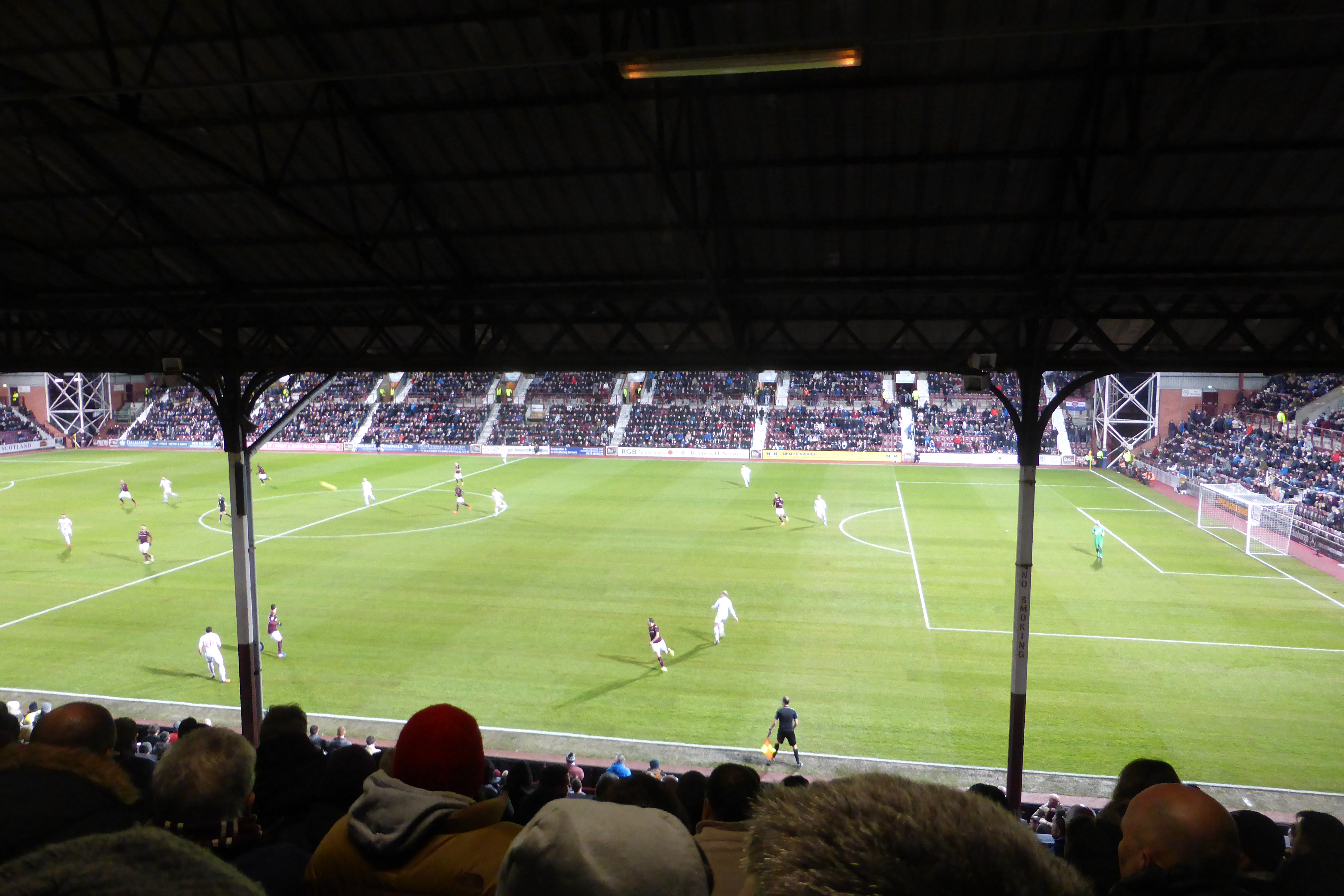
One of the friendly stewards allow me into the press room. He says that it used to be a garage, as long back as he could remember. I suggest that it could have been built as a gymnasium converted to a garage at a later date. But I am not quite convinced myself. It is rather strange. The interior looks nothing like the Archibald Leitch stand at Oakwell in Barnsley that I visited most recently. Or Tynecastle in Edinburgh, also from 1914, or any of the other Archibald Leitch stands I have visited for that matter. There is no board room, no seperate entrance and passage for the board members – although the press section may have been reserved seats originally. In fact, the more I look around, it all appears a bit like the columns: more basic and raw than a standard Archibald Leitch stand.
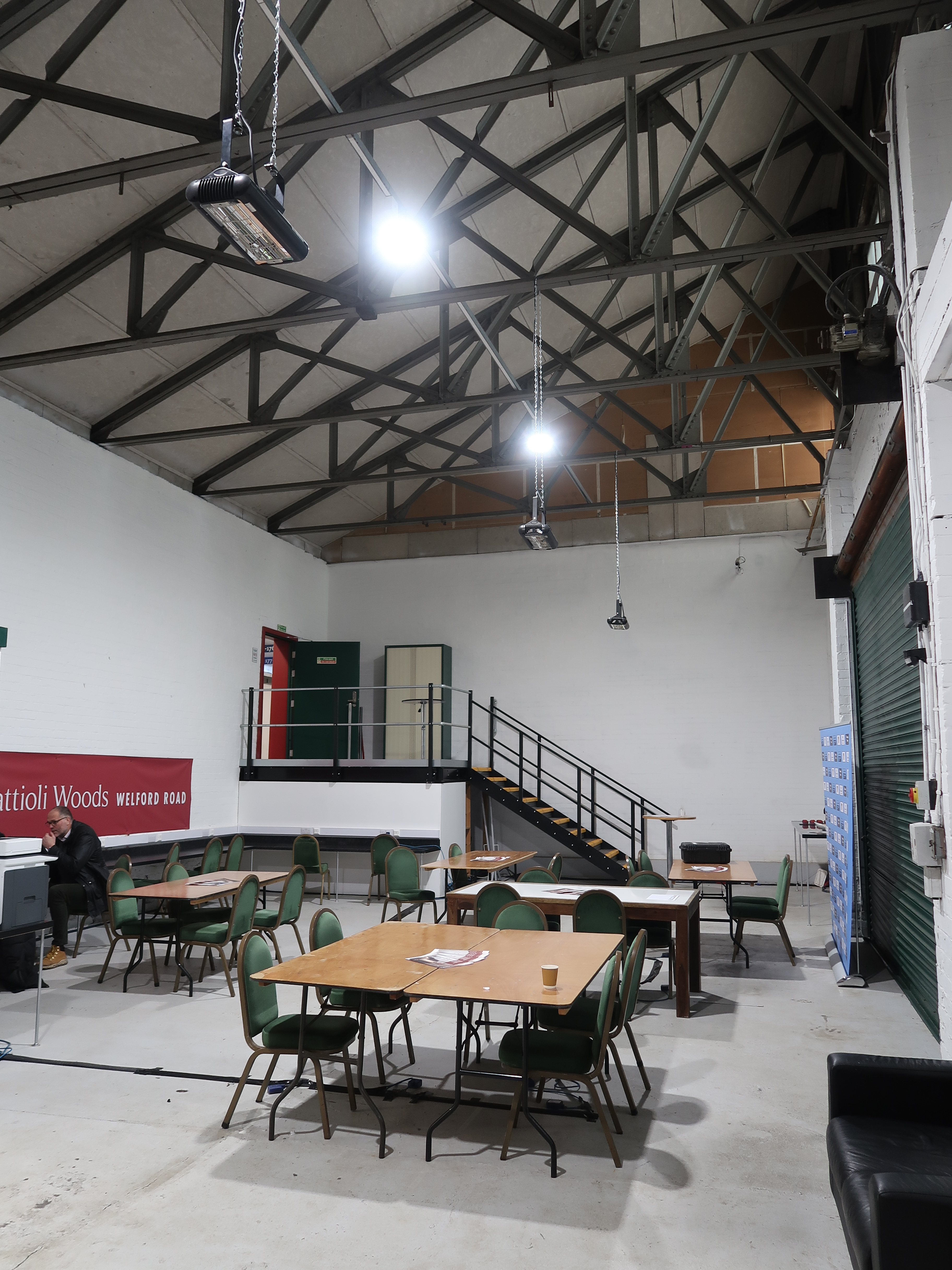
The concrete stairs from the terrace to the stand are also something, I haven’t seen in an Archibald Leitch stand. In fact, the construction with a single passage way through the stand with the players’ dressing room fitted in between the garage/press room and the refreshment rooms make press, spectators, board, and players mix with each other. Strange, but thrilling!
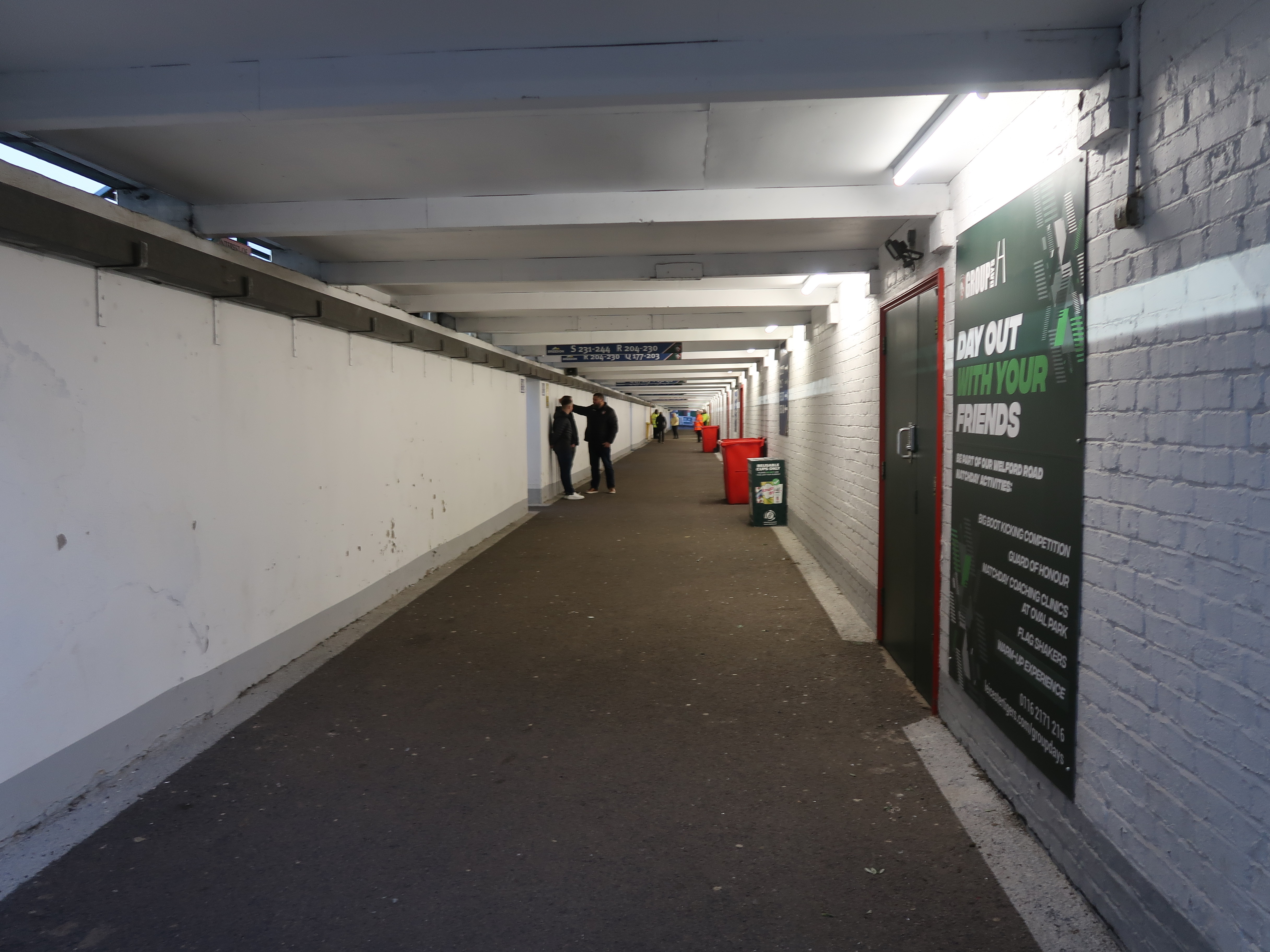
Three Gloucester players arrive at the same time as me, looking for their dressing room. All doors are locked, but one of them can hear the loud music behind one of them, and keep knocking at it, convinced that it must be his teammates. And he is right. I get a small glimpse of the room – it looks really small and tight. Players come out in the passage on their way to the pitch for warming up. There are a few boys waiting for them, high-fiving and asking for autographs. I am really amazed how big some of the players are. But still, it is not what I expect in a proper Archibald Leitch stand.

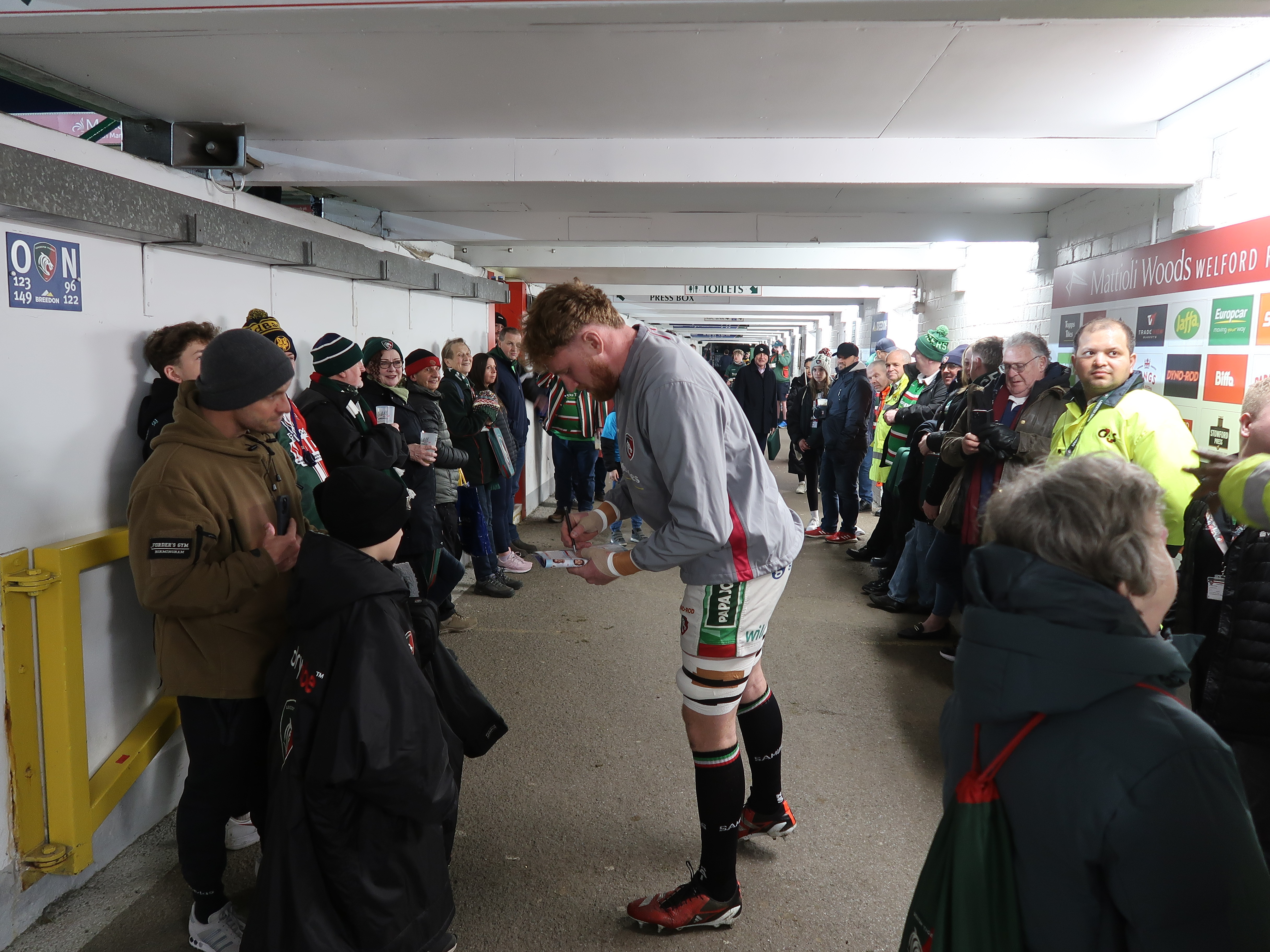
Finally, there is no gable on the roof. Well, not all of his stands have one. And other architects at the time did put gables on their stand roofs. So it does not prove anything. And, of course, it could have made way for the Television gantry that is there now.

When I return home to Denmark, I search for old photos of the ground, to see whether I can find a photo of the stand with a gable on the roof. In hindsight, I wonder why I hadn’t researched the story of the stand thoroughly but just stopped when I identified Archibald Leitch as the architect. Because the aerial photo of the ground from 1935 shows two apparently similar main stands, one on each side of the ground. I pick up the newspaper trace where I left it – with the completion of the Archibald Leitch stand on 31st August 1914. And I find a new trace in 1920: the club decide to have another stand built on the other side of the ground. The name of the architect is not mentioned, which it probably would have been, had it been Archibald Leitch.

1935 photo from Britain from above
What’s more. The 1920 newspaper tells that the ’old’ Archibald Leitch is to be extended at both ends with a further 1.500 seats added to the existing 4.000. And the new stand is to be built on the Cattle Market side of the ground – and that is the Breedon Stand. Altogether, the ground will have 9.648 covered seats and covered standing room for 22.500 in 40.000+ capacity.
To top my findings, I find an article from November 1920 telling that the Midland Counties Motor Garage Co. Ltd. as one of their new departures have ”taken a lease of the interior of the new stand erected by the Leicester Rugby Football Club”. Just two months after the completion of the stand.
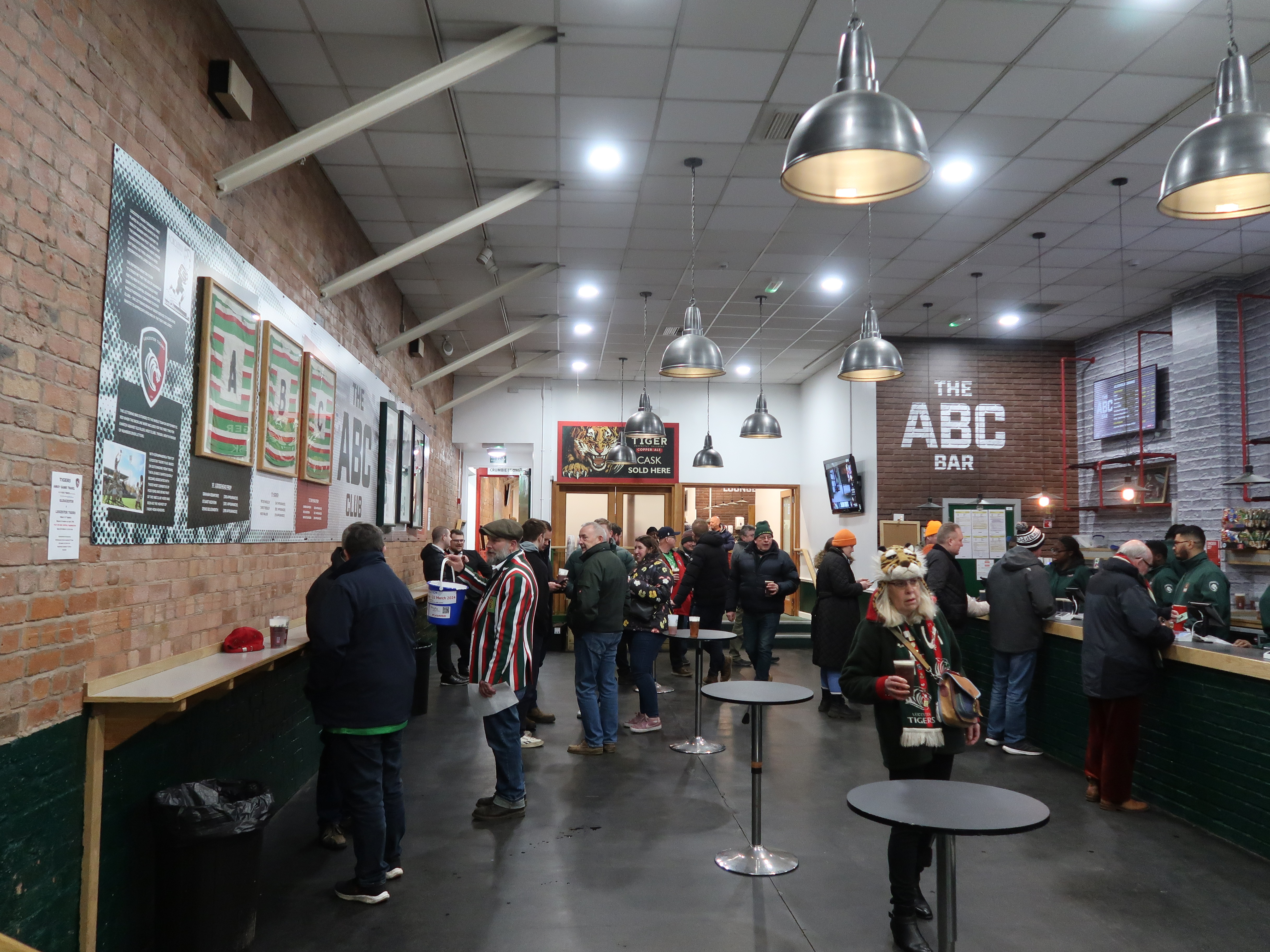
There can be no doubt, that the Breedon stand is the 1920-stand. The architect may to some extent have tried to make it resemble the six-year-old Archibald Leitch stand on the other side of the pitch, but he has not ’copied’ it. Apart from all the little details like the columns, the Archibald Leitch stand had no terrace in front. And the newspaper report from 1914 states that the Archibald Leitch stand had tip-up seats of oak, not benches. Of course, the tip-up seats could have been replaced, but you rarely go from tip-up seats to benches; it is normally the other way around. And judging from a photo from the 1950’s, the extensions to the Archibald Leitch stand in 1920 had the same benches as the Breedon stand, whereas the original part of it still had wooden seats. A colour photo from 2004 on the Tigers’ website actually shows the benches to be painted the same green as in the Breedon stand’s benches, whereas the seats are red and white.
So – the Breedon stand is not an Archibald Leitch stand after all. At most, a six years younger half-sister.
What then happened to the Archibald Leitch stand? It was replaced by the modern Caterpillar stand in 2008. I search for more detailed photos of it, but it is difficult to find any. I do, though, find one where I can see that the columns in the Archibald Leitch stand DID have the characteristic curved shape of his – the first thing that struck me as odd about the Breedan stand.
I also have a second look at the photos, I took when I passed the ground in 2013. At one end of the ground, where a new stand has been erected since then, there were a couple of houses, one of them with an engraving “Leicester Football Club 1909”, the other with the “Presidents entrance”. Maybe the board had already had adequate facilities here when the Archibald Leitch stand was erected – leaving plenty of room for other facilities. And that would explain why the architect perhaps even was looking for facilities to put into the 1920 stand and ended up with a money-earning garage. But I would have thought that either the club houses from 1909 or Leitch’s stand would also have been equipped with state-of-the-art dressing rooms – why did they put dressing rooms in the Breedon Stand? And why do they stick to them after building the brand new Caterpillar stand?
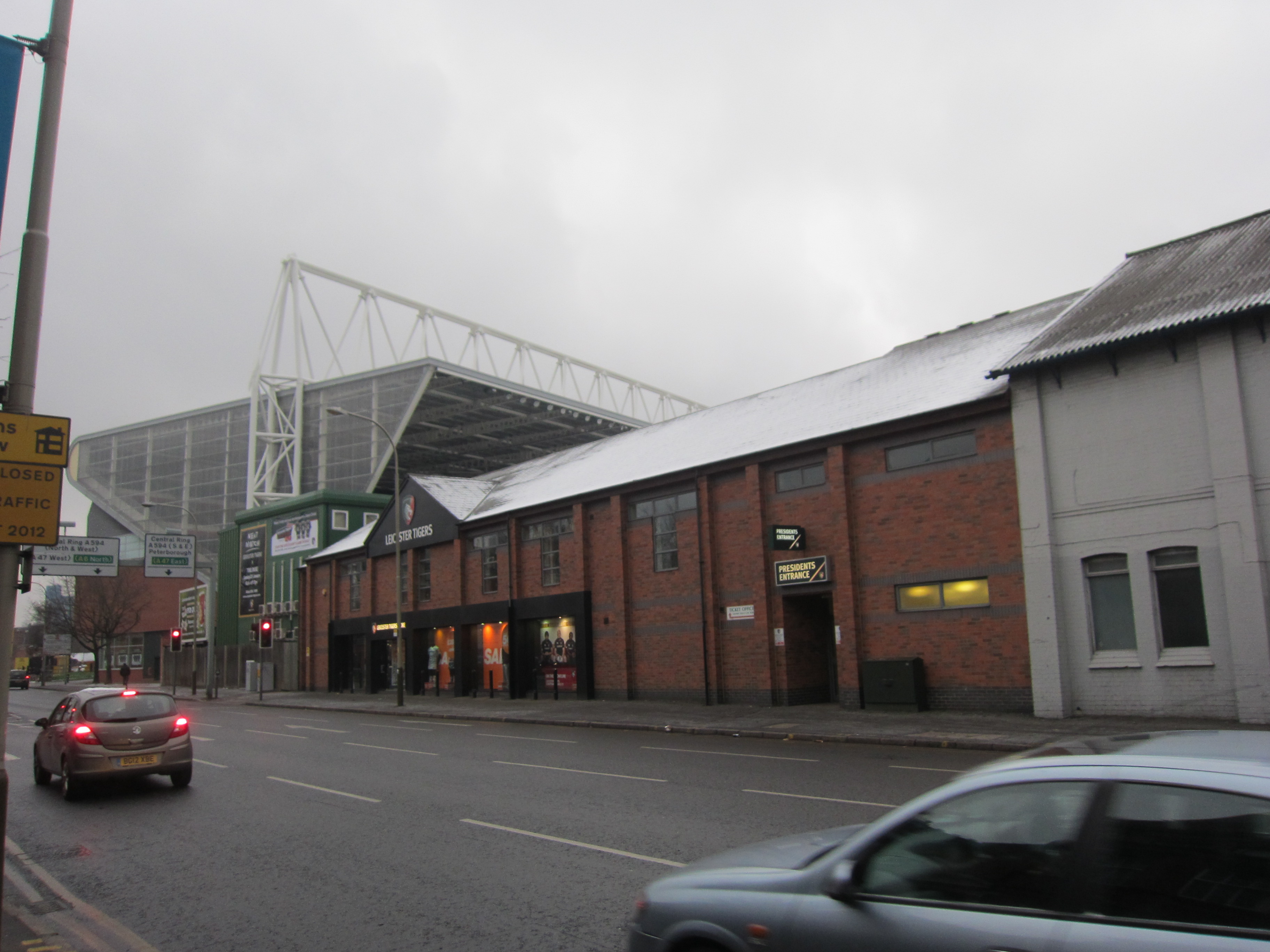
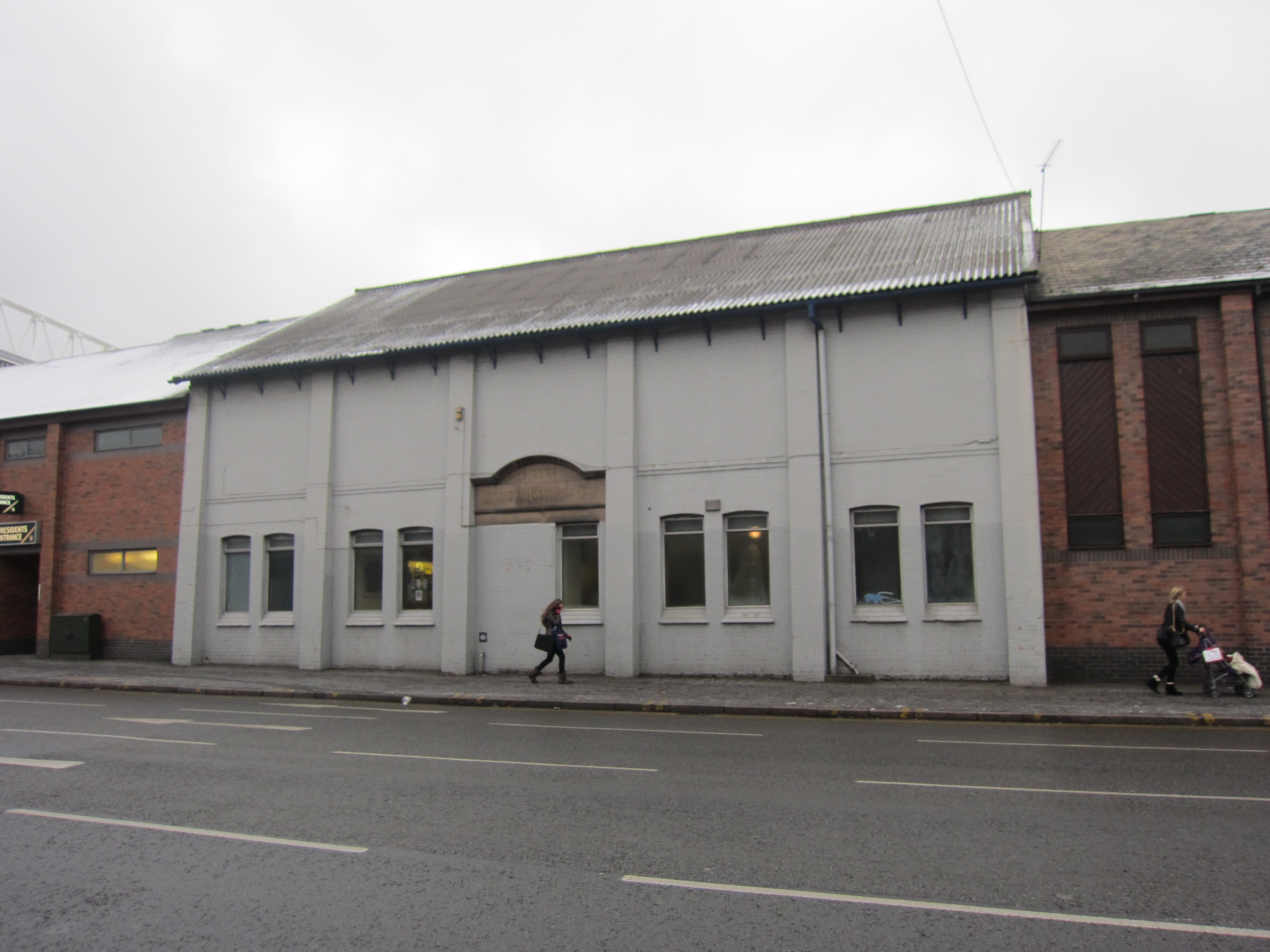
In fact, before the match I see a number of players walking from a newly built hotel next to the ground through the crowd into the Caterpillar stand. Why not have the dressing rooms there? I am just wondering, not complaining, because it all adds to the experience. Seeing the players walking through the crowd, experiencing the players and the crowd mingling in the passage way of the Breedon Stand. You just feel more close to them than in the modern football grounds, where you rarely get that close to the players.
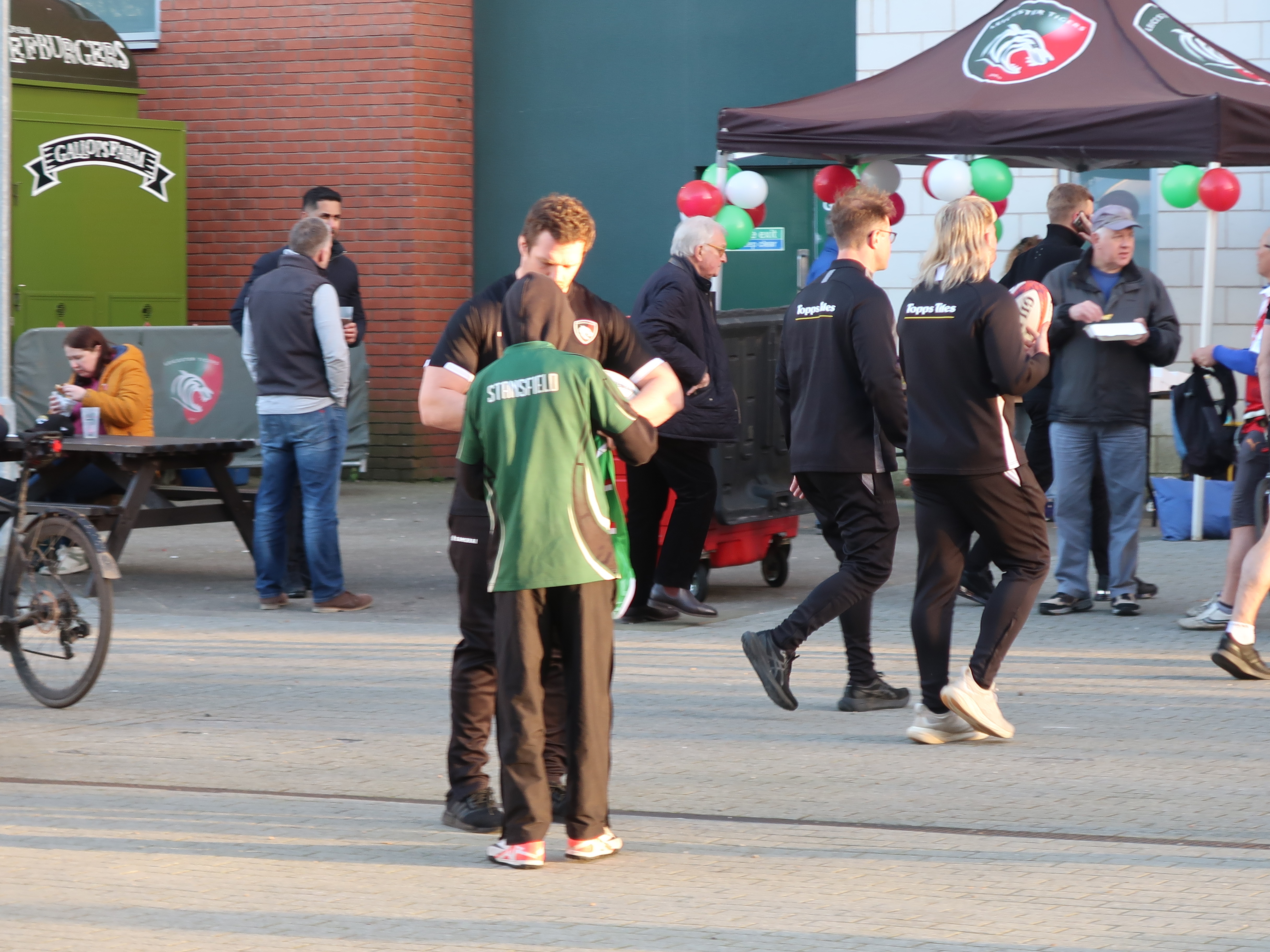
Leitch or not – watching the match from the Breedon stand is far more enjoyable than sitting in a plastic seat in a modern concrete stand. There is a buzz of life from the terraces, the soundscape is just that little bit different. And then I have chosen the perfect seat. I am sitting in the back row, which has two rather than just one board to sit on – and I can lean against the wooden panelling at the back. And just as I look for extra leg room whenever I book my flight seats, I have found the back row seat at the end of the aisle, so there is no bench in front of me – I can stretch my legs as much as I want to!
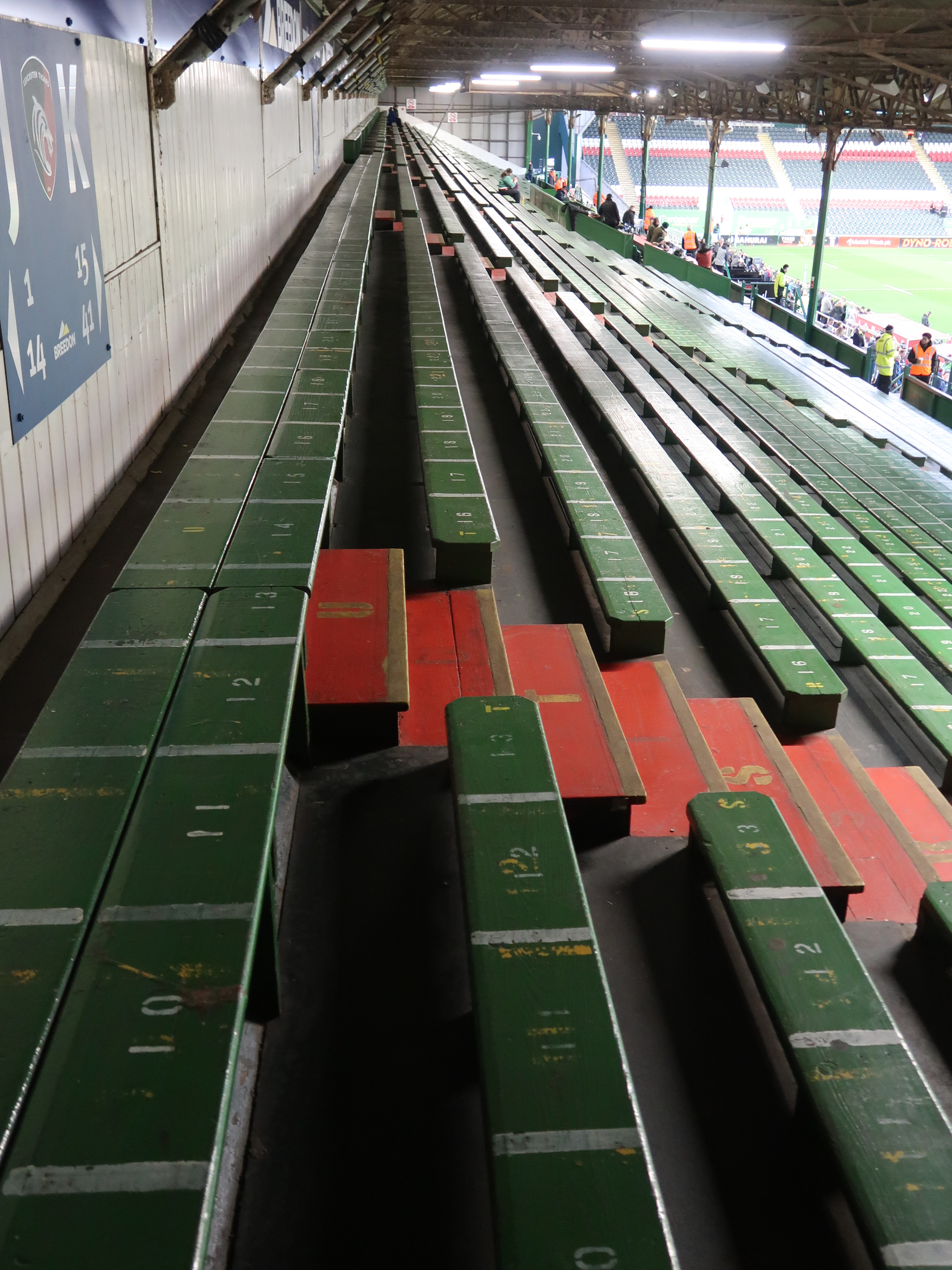
Before the match, I have a chicken balti pie at a chip shop opposite the ground. I get talking with a season ticket holder for more than thirty years, enjoying his fish ’n chips. He used to be standing on the terrace, but now it is too hard to be standing for such a long time, so he now has a seat in the Breedon stand. Today, though, it will be tough, because he has forgotten his pillow to sit on – the benches are so hard, he complains. Well, maybe because my seat is broader, and I am able to lean back, I don’t think about it.
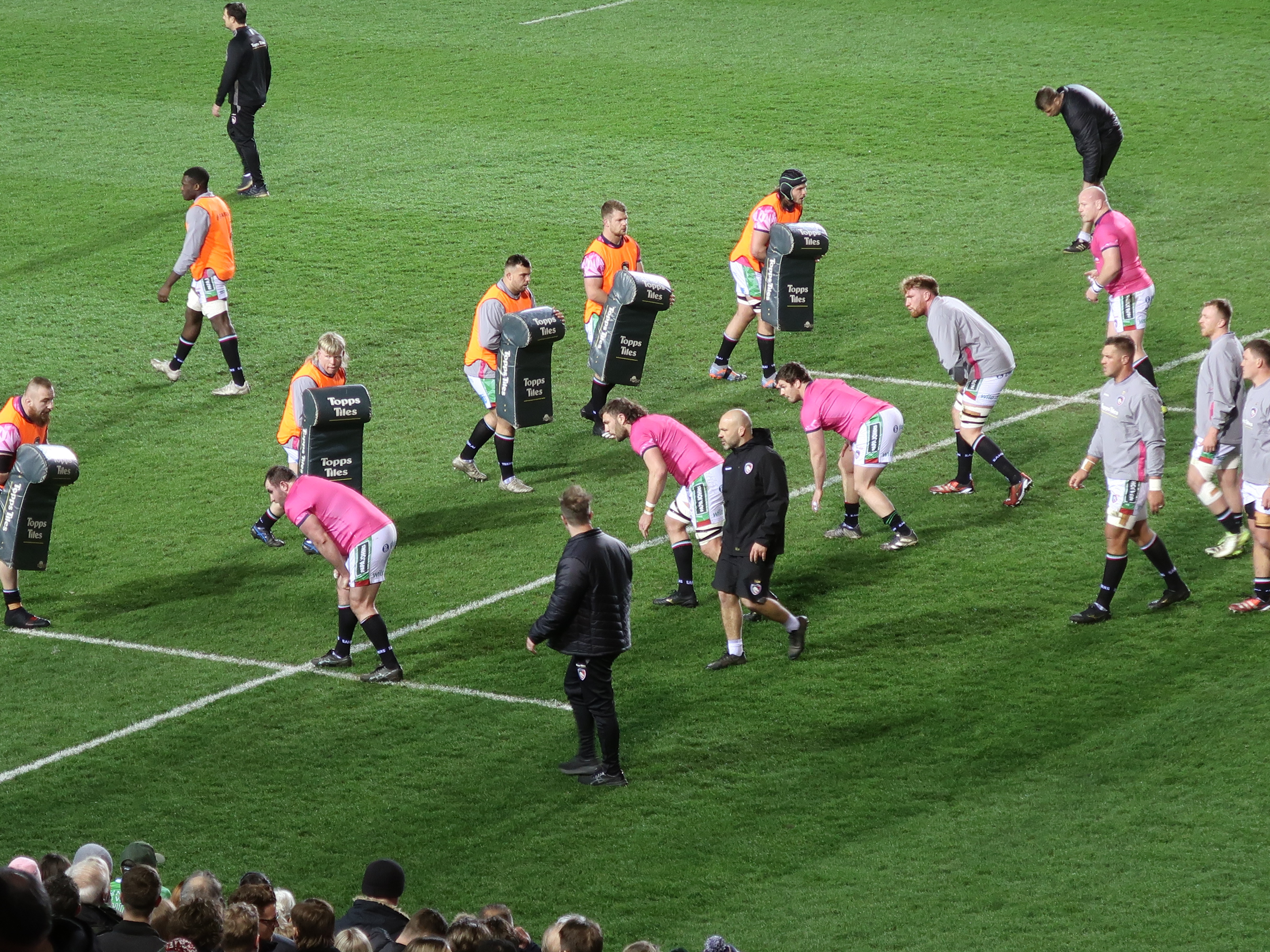
As for the match – well, my knowledge of rugby is probably too limited to appreciate the finer details. But it is really fascinating to watch and compare with football tactics in the 1880’s, when the two games grew apart and the rules became fixed. You can imagine how revolutionary the Scottish passing game must have been to the English rugby-like game with a couple of backs sweeping up, and most players trying to break through the line of the opposition on their own. Most of the rugby players on the pitch are big and strong – you can’t imagine them in a modern football side. One of the Gloucester players, though, looks more like a footballer. Slim, well-trained, sun-tanned – and whereas the other players are filling out there shirts and shorts, the way his shirt and shorts fit, make him look more like a footballer. He is the technical kicker – and succeeds with all his conversions and penalty kicks. And that turns out to be the difference, as Leicester Tigers miss a couple of their conversions and lose 27-25 – even though they have one try more than Gloucester.
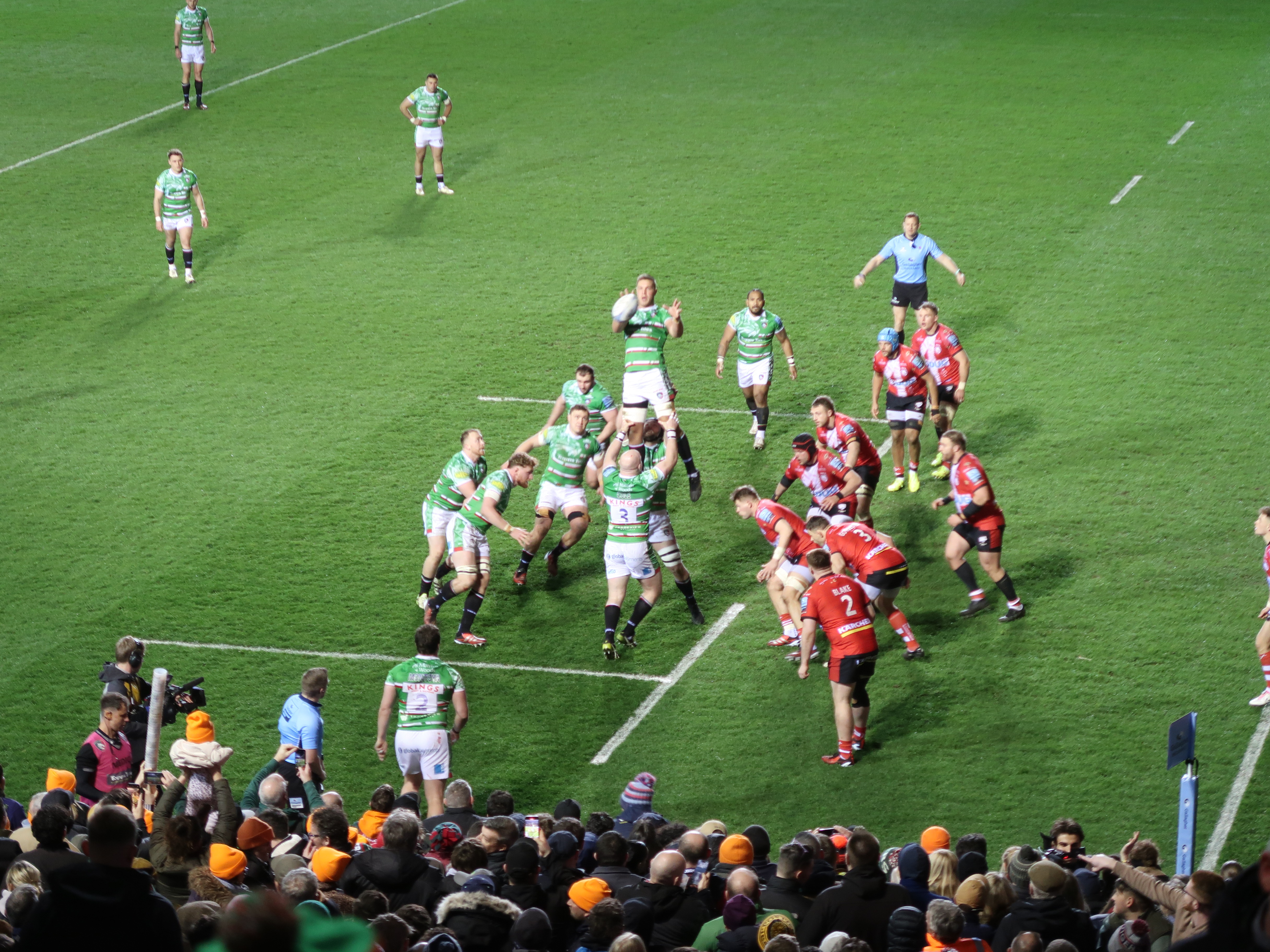
It is also fascinating to see how well drilled and coordinated the work of the lines is. It takes almost half an hour for Gloucester to work a little gap in the Leicester defence. And immediately you sense that they will break through. It is a bit like watching Lord of the Rings, seeing the Orcs trying to break through – with the Leicester Tiger-line being pulled apart trying to close gaps, whereas the Gloucester side play the ball from one side to the other and back again, keeping them strectched – and eventually creating the gap for a try. THAT is really fascinating. On the other hand, Leicester Tigers make most of their try’s from brute force, just pushing everybody and everything over the line. In fact, I am even fascinated by the warm-up routineds – a mixture of force, strength and positional drill.
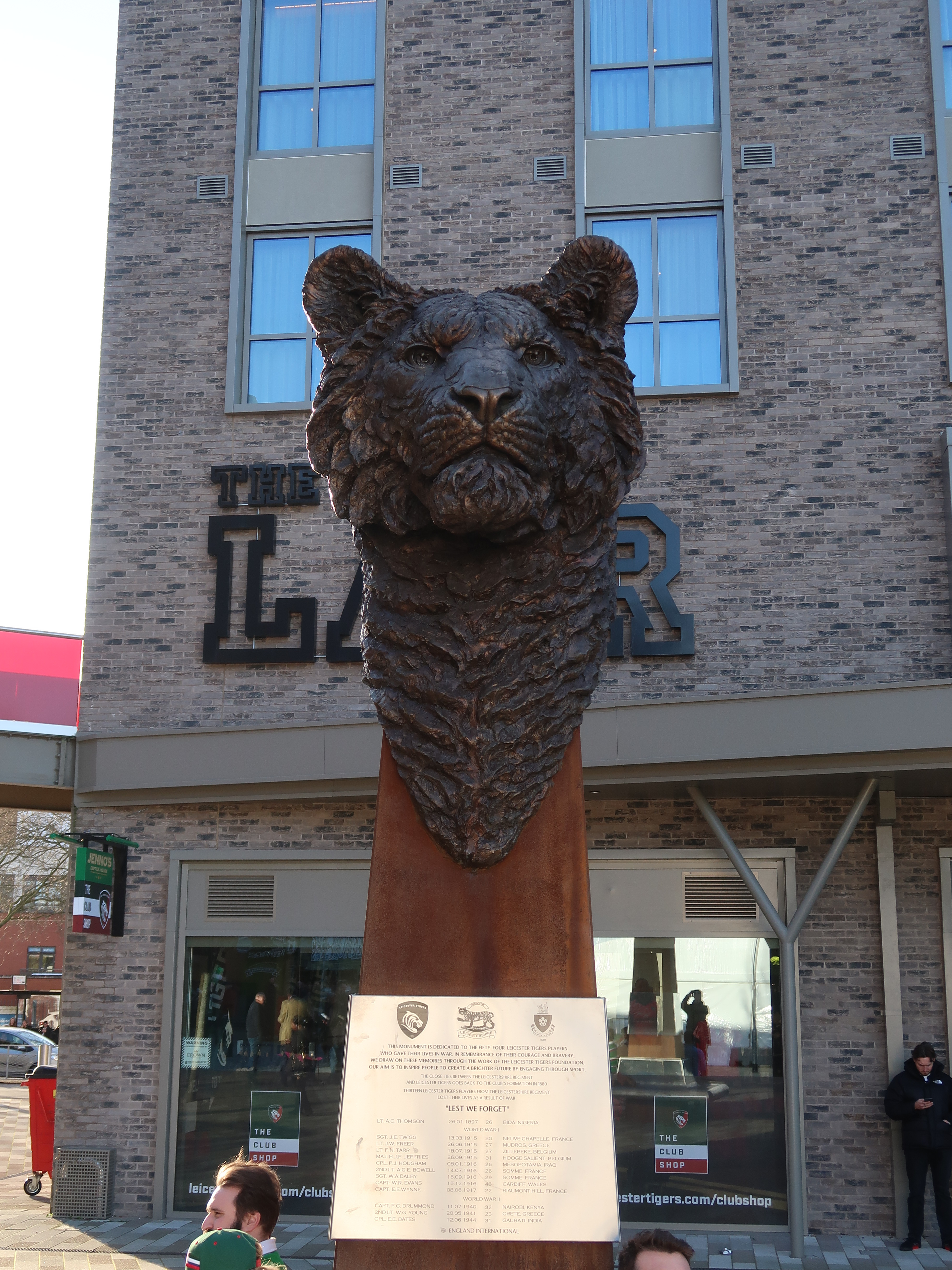
In many articles from the late 19th century, the establishment of the British Empire is partly explained by the educational value of sports like rugby and football. The British have learned to be disciplined and stand their ground, use their strength and keep the formation. And they have been drilled in teamwork – through their sport. It seems quite remote from modern football – but I keep thinking of it, as I see the rugby warm-up routines and the game progress. At the same time, there are – as at most football grounds – several memorials for former players who have lost their lives serving their country in the wars. But there is just something special about it here. Part of the memorial in front of the new Caterpillar stand is a roaring head of a Tiger – opposite signs marking the distances to Ypres, Berlin and Badi. It may not be intended, but to me, this constellation of symbols tell a story about Tigers’ players having gone to war, prepared to lose their lives – and they are prepared to do it again, if need be. The game makes them prepared – and therefore this game is deadly serious.
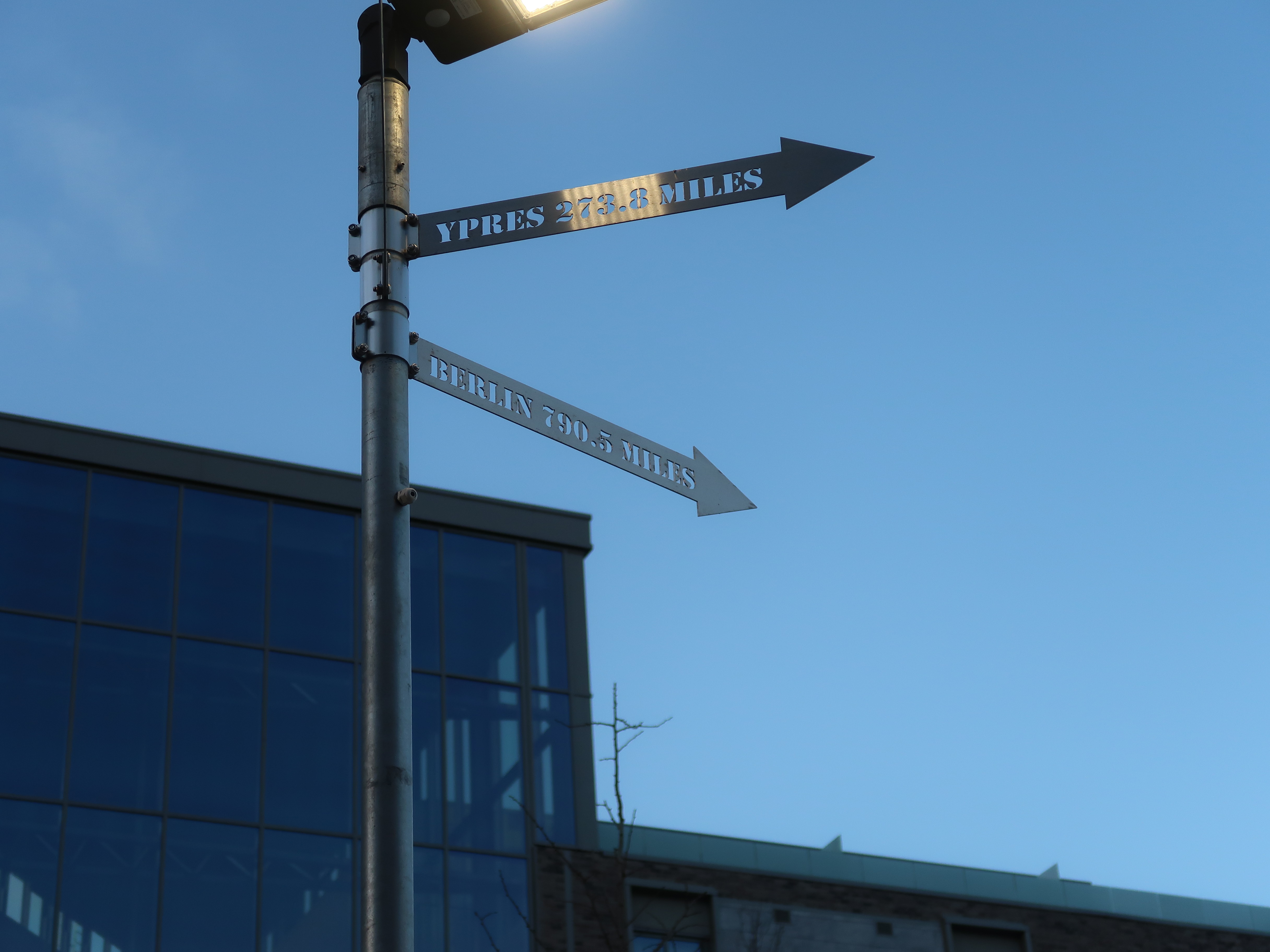
Having said that, the atmosphere is good and friendly – there is no police or any aggression outside the ground. The Leicester Tigers do enter the field to smoke and fire – and Deep Purple’s Smoke on the Water, just like my local Danish football team BK Frem used to do, pumping up the atmosphere, but still not aggressive. There does not seem to be an away section – I don’t hear any Gloucester chants, whereas chants for the Tigers frequently go up round the ground, just as the oohhs and ahhs following the flow of the game.

So all in all – it is a great experience. The game, the ground, the match day atmosphere. And although it turned out not to be an Archibald Leitch stand, I will prefer to watch my next rugby match from the Breedon Stand with the terrace atmosphere and unique character.
Leave a comment